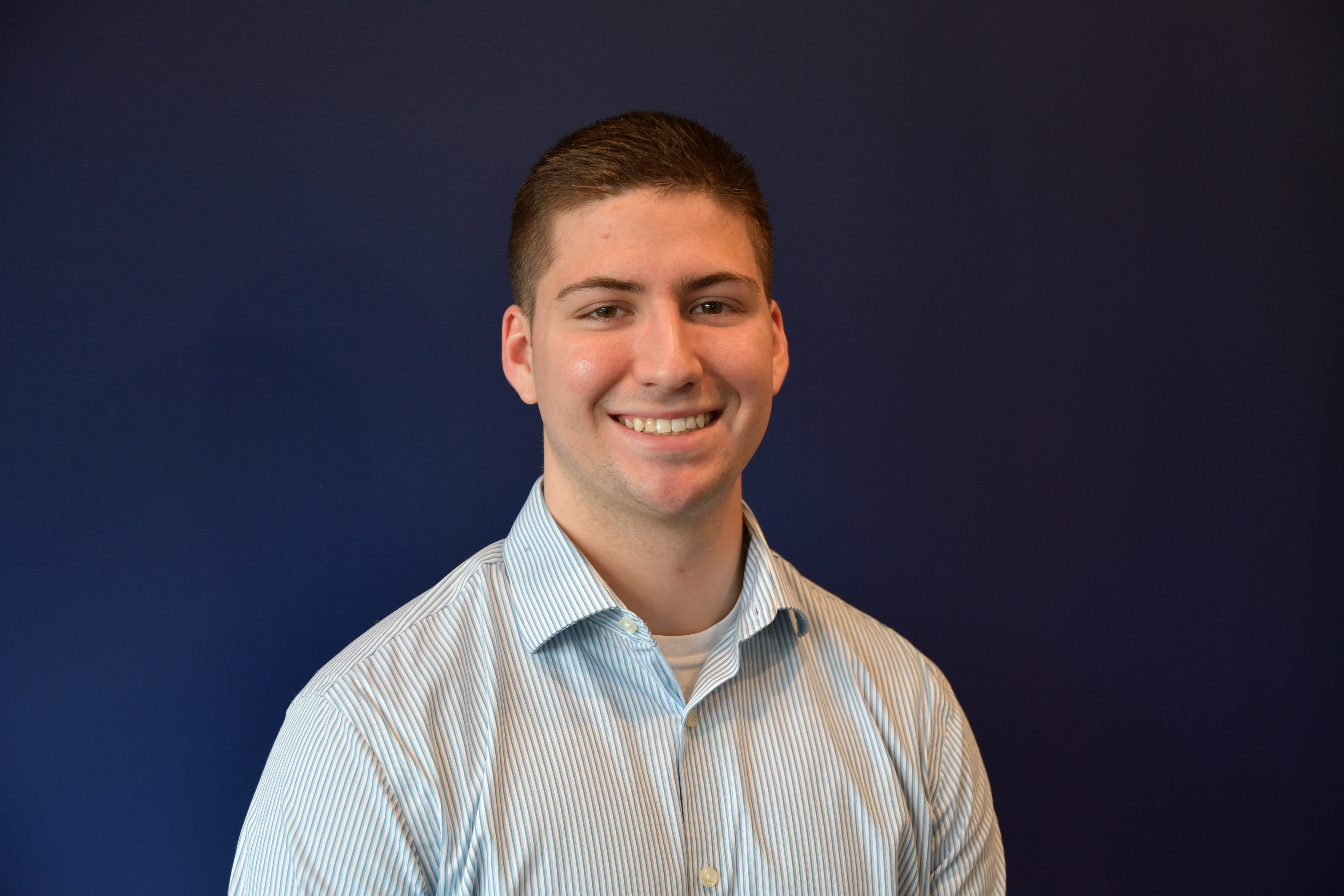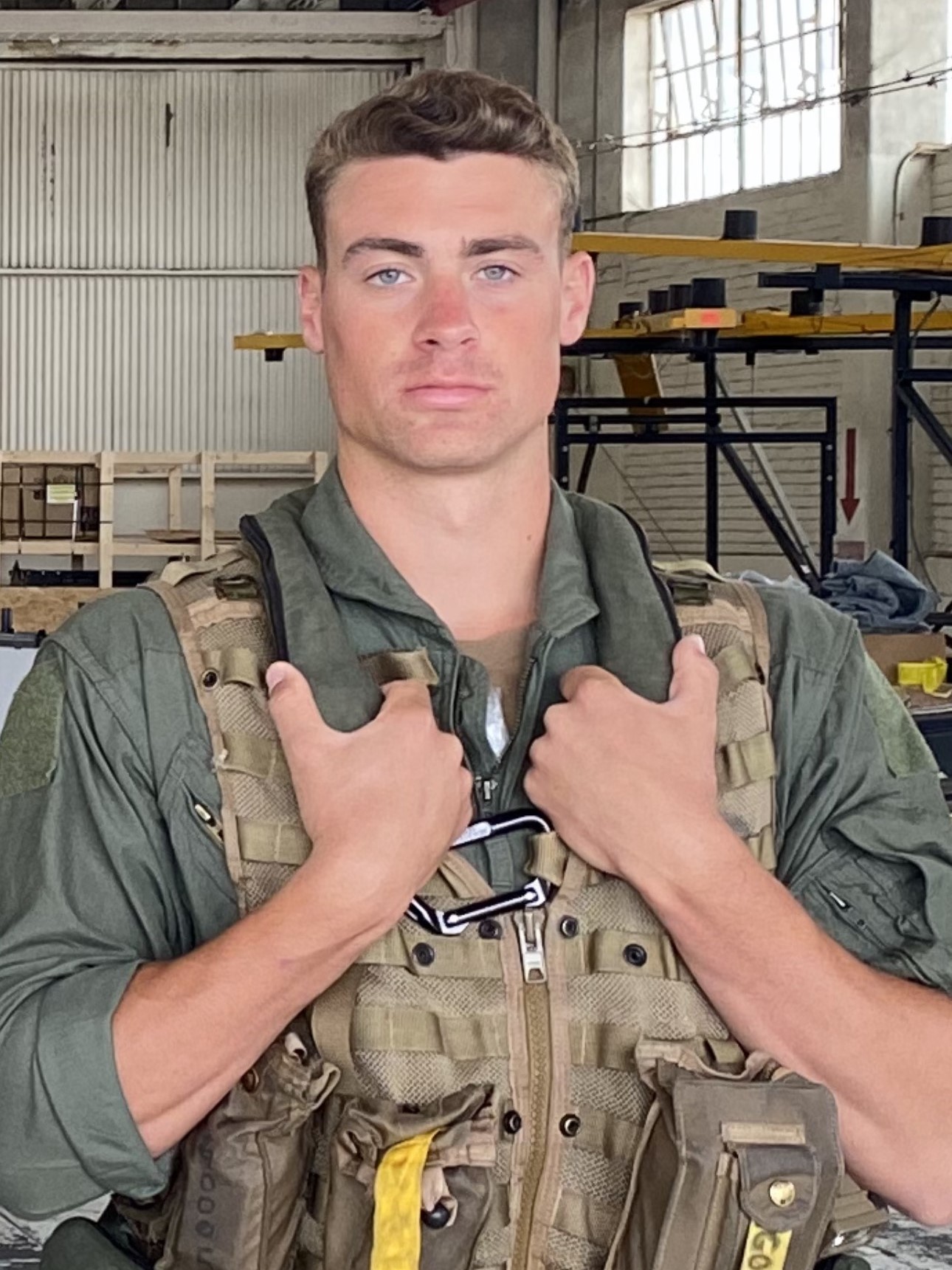
Ryan Walczak and Miles Shealy are seniors at The Catholic University of America’s School of Engineering. They are both midshipmen in the Naval Reserve Officer Training Corps preparing to be officers in the United States Navy. Both have a passion for engineering and aviation, and were recently accepted into Naval Flight School, a prestigious program that prepares naval officers to serve as military pilots. They are also good friends who met at Catholic University.
 Ryan is pursuing a Bachelor of Biomedical Engineering and is originally from Macungie, Pennsylvania. He developed a passion for engineering and STEM-related topics as a child and was continually told by friends and family that he would make an excellent engineer because of his problem solving skills and passion for helping people. When it was time to apply to colleges, he was set on studying biomedical engineering due to its interdisciplinary applications. Ryan said biomedical engineering is a discipline that is “...continually innovating and always incorporating new knowledge from other disciplines within engineering and other STEM fields to promote progress in engineering, health, and medicine.” He was inspired by the far-reaching applications of biomedical engineering and its ability to help individuals live better and more fulfilling lives.
Ryan is pursuing a Bachelor of Biomedical Engineering and is originally from Macungie, Pennsylvania. He developed a passion for engineering and STEM-related topics as a child and was continually told by friends and family that he would make an excellent engineer because of his problem solving skills and passion for helping people. When it was time to apply to colleges, he was set on studying biomedical engineering due to its interdisciplinary applications. Ryan said biomedical engineering is a discipline that is “...continually innovating and always incorporating new knowledge from other disciplines within engineering and other STEM fields to promote progress in engineering, health, and medicine.” He was inspired by the far-reaching applications of biomedical engineering and its ability to help individuals live better and more fulfilling lives.
Ryan also recalled a desire to serve his nation from an early age. At Catholic University, he became interested in discovering how biomedical engineering could be applied to serve the military community, specifically, veterans with disabilities. In an effort to pursue biomedical engineering research and offer his services to members of the military, he searched for a way to incorporate all these interests through his undergraduate research.
 Leading into his senior year, Ryan had found the answer to how he could link his two passions together. With a group of classmates, he embarked on a senior design project to design and build a device that would help a military veteran amputee play golf again. Eric Lund, a bilateral hand amputee, lost his hands during service from a blast injury, causing both of his arms to be fully amputated from below the elbow. He later received a double arm transplant, which allowed him to regain limited hand movement and control; however, the transplant did not immediately offer him a level of functionality that would allow him to play a round of golf. Regaining the ability to play golf again was not only important to Eric for personal and therapeutic reasons, but also for increasing his overall arm strength and hand functionality. In order to help Eric to play golf again and increase the ability of his transplanted arms, Ryan and his team set out to design and build a prosthetic device that would offer increased support and functionality.
Leading into his senior year, Ryan had found the answer to how he could link his two passions together. With a group of classmates, he embarked on a senior design project to design and build a device that would help a military veteran amputee play golf again. Eric Lund, a bilateral hand amputee, lost his hands during service from a blast injury, causing both of his arms to be fully amputated from below the elbow. He later received a double arm transplant, which allowed him to regain limited hand movement and control; however, the transplant did not immediately offer him a level of functionality that would allow him to play a round of golf. Regaining the ability to play golf again was not only important to Eric for personal and therapeutic reasons, but also for increasing his overall arm strength and hand functionality. In order to help Eric to play golf again and increase the ability of his transplanted arms, Ryan and his team set out to design and build a prosthetic device that would offer increased support and functionality.
With the support of their project advisor, Dr. Gregory Behrmann, they designed 15 prototypes of the device, fine-tuning and improving its function each time. Ryan said that the inspiration behind the prototyping process was to “just make it,” a phrase Dr. Behrmann often relayed to the team. Ryan said his team has found success throughout the design process thanks to the support they have received from Dr. Behrmann and the wider School of Engineering community. They are now in the final stages of their design and look forward to presenting their project at the School of Engineering Senior Design Night this month and ultimately to Eric, once it is fully completed.
 Ryan said this “just make it” mentality has also translated to his work in the NROTC program. He said the program is time consuming and can be demanding, yet the perseverance and discipline that he has developed at the School of Engineering—in addition to the support from his peers and instructors—has helped overcome these challenges. The skills he learned at Catholic University and the NROTC program will benefit him in flight school and in his work as a pilot afterward. Ryan said engineering and military service are synonymous with reliability, leadership, and diligence, all skills he has developed throughout the last four years.
Ryan said this “just make it” mentality has also translated to his work in the NROTC program. He said the program is time consuming and can be demanding, yet the perseverance and discipline that he has developed at the School of Engineering—in addition to the support from his peers and instructors—has helped overcome these challenges. The skills he learned at Catholic University and the NROTC program will benefit him in flight school and in his work as a pilot afterward. Ryan said engineering and military service are synonymous with reliability, leadership, and diligence, all skills he has developed throughout the last four years.
 Miles Shealy, who is pursuing a Bachelor of Civil Engineering, was born in Boston, Massachusetts, but grew up in Madison, Virginia. He comes from a military family; three of his uncles served in the military as fighter jet pilots. Military service was always on Miles' radar and he was excited to have the opportunity to come to Catholic University on an NROTC Scholarship. Miles also shared similar sentiments on the community environment at the School of Engineering, specifically within his civil engineering cohort. He emphasized the sense of support he feels from his engineering peers and faculty in addition to his friends and instructors in the NROTC program. Miles said the support he has received from Dr. Jason Davison particularly—the faculty advisor for his team’s senior design project—has helped him and his team find success throughout the research, design and implementation of their project.
Miles Shealy, who is pursuing a Bachelor of Civil Engineering, was born in Boston, Massachusetts, but grew up in Madison, Virginia. He comes from a military family; three of his uncles served in the military as fighter jet pilots. Military service was always on Miles' radar and he was excited to have the opportunity to come to Catholic University on an NROTC Scholarship. Miles also shared similar sentiments on the community environment at the School of Engineering, specifically within his civil engineering cohort. He emphasized the sense of support he feels from his engineering peers and faculty in addition to his friends and instructors in the NROTC program. Miles said the support he has received from Dr. Jason Davison particularly—the faculty advisor for his team’s senior design project—has helped him and his team find success throughout the research, design and implementation of their project.
Miles also said the School of Engineering offered him other excellent opportunities, including a year long internship with Clark Construction Group, during the construction of the new Conway School of Nursing on Catholic University’s campus. During his internship, Miles supported project managers throughout the build, and had the opportunity to work in the building regularly. He said it was really eye-opening to see all of the techniques and methods he learned about in the classroom in practice on a real construction site.
Both Ryan and Miles were inspired to apply for Naval Flight School during their NROTC summer trainings. The midshipmen were required to participate in a training program each summer during their time in the NROTC program. The training introduces midshipmen to the various communities in the Navy and helps them decide which they would like to have a career in. The training includes time on nuclear submarines, surface vessels, flight time on navy aircraft, and time with the U.S. Marine Corps.
 Ryan and Miles said the weeks they spent during the summer training program helped them to narrow down which sector of the Navy they were interested in. Moreover, the summer they spent in San Diego, California with a Naval aviation squadron tremendously impacted their decision to pursue careers as pilots in the United States Navy.
Ryan and Miles said the weeks they spent during the summer training program helped them to narrow down which sector of the Navy they were interested in. Moreover, the summer they spent in San Diego, California with a Naval aviation squadron tremendously impacted their decision to pursue careers as pilots in the United States Navy.
Miles also said his family and friends also encouraged him to apply for this program. In addition, one of the lead project managers at Clark Construction was an avid aviator himself and further inspired him to commit to this path.
Admission into this program is based on major, GPA, and scores on the Aviation Selection Test Battery (ASTB). It is a competitive process that requires years of preparation and success to gain admittance. Through the skills they developed in class, the support of their peers, and their own personal dedication and integrity, they were offered admission into flight school. Both were thrilled to hear of their admission, but were also aware that they were not handed this opportunity, they earned it through commitment and dedication.
They will be traveling to Pensacola, Florida this summer to begin two years of flight school followed by a minimum eight years of service after earning their wings. Miles hopes to fly fighter jets, specifically the F-35 or the F-18. Ryan would like to fly electronic warfare aircraft, which interfere with an enemy planes' radar and electronics during combat. Achieving these assignments requires one to graduate in the top of their class, certainly a competitive undertaking. However, they are confident in their ability and welcome the challenge given all they have overcome to get to this position.
When asked to offer a piece of advice to a new midshipman in the program and the School of Engineering, each had very specific wisdom to offer. Miles said to “...always take advantage of the support that your peers and instructors offer and to always learn as much as you can from them.” Ryan encourages students to get involved in as much as you can, saying, “there are no bad opportunities in a place like this; take advantage of it all, and take pride in the path you have built for yourself.”

